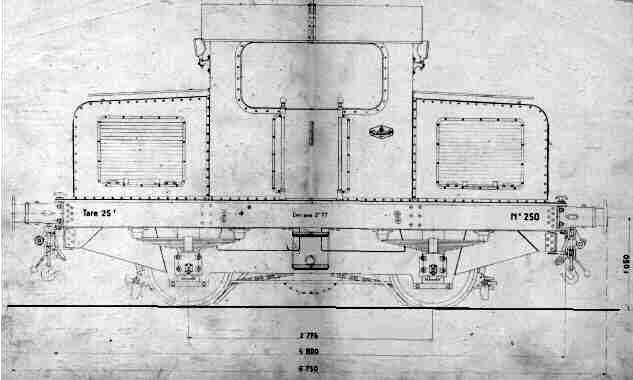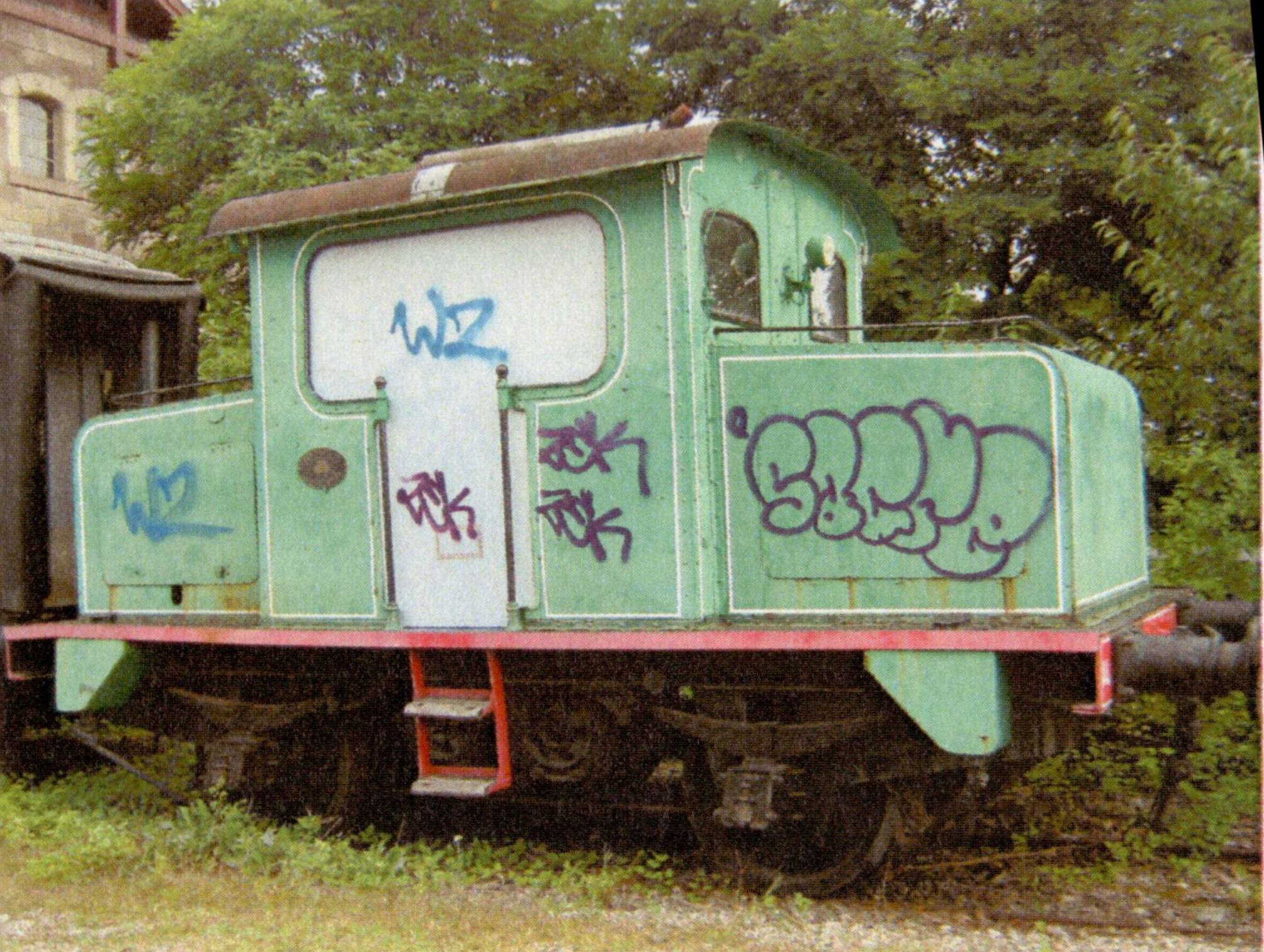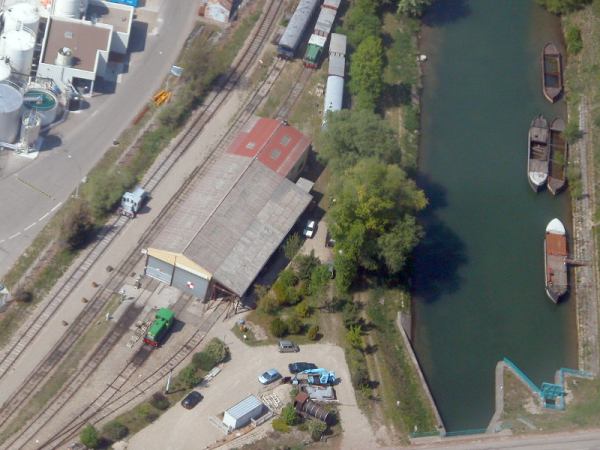General
characteristics of the switcher:
| Builder: |
Gaston Moyse (La
Courneuve) |
| Model/Type: |
25 TED100 |
| Date of delivery: |
1929 |
| Road numbers: |
N°276 |
| Diesel power [kW]: |
56 |
| Locomotive power [kW]: |
? |
| Maximum starting
tractive
effort [kN]: |
? |
| Maximum safe
speed [km/h]: |
? |
| Weight in working
order [t]: |
16,9 |
| Total length [m]: |
6,75 |
| On-board voltage [V]: |
24 |
General view:

Builder plate:

Short
presentation:
The
switcher nicknamed "DMC" at the CFTR is a switcher built by a
well-known company in France: Gaston Moyse. It has been built
in the suburb of Paris in 1929. It has a long history at the
CFTR: it was belonging to the CFT of the Doller (the former touristic
railway from which the founding members were coming) and came to
Volgelsheim in 1982. Its owner is a founding member who owns the
Baldwin locomotive too.
Its
nickname DMC
comes from the former textile company from Mulhouse "Dollfuss, Meig
& Cie" which used it the last before the CFTVD saved it.
Life at CFTR:
| Last owner before
salvage: |
CFTVD |
| Retirement date: |
? |
| Acquisition date: |
1982 |
| Current owner: |
CFTR |
| Restauration: |
2010 |
| Use at the CFTR: |
Internal switch |
| Retirement by the
CFTR: |
- |
At
the begininning, (what can be seen here
between 1'10 and 3'00),
it has been used to pull the train to the station and this was a
quite difficult task for a switcher which is so
weak.
But at that time, there was not enough switchers to do the job and
without it, the CFTR would have had great difficulties!
After
this, the DMC was only used to switch other locomotives in the depot
but this service was a little bit too hard and one of its traction
motors could not survive it (despite some failed attempts of the
webmaster to try to bring it back to life. Then it has been put aside,
waiting for an occasion to repair it. At the beginning, it stayed at
the depot but because it just disturbed the operation, it has been
parked at the station in Volgelsheim.
After
some few years and because the safety situation in France continuously
worsens, the DMC and the mail car (which also was parked at the
station) have been vandalized (fortunately only superficially).

One
can forget it but it is one of the very rare last switcher from the
Chemin de Fer Alsace-Lorraine (the successor of the imperial
railway of Elsaß-Lothringen) like the
steamlocomotives 030. That's why it has been repaired
in 2010 and in 2014 a second Moyse has been acquired for spare parts,
especially for the traction motor.
Pictures (CFTR):
Video1,
Video
2
External links:
More
technical infos:
The
4 cylinder in line diesel engine is directly mounted in the cab!
Something very positive for the service but suboptimal for the
operation. The transmission is electrical, like a lot of Moyse produced
in the 20's. The intention was praiseworthy but the transmission is not
the best part of the switcher. It has been reported that it went up
regularly in smoke. (Traction motors and generator...)
The
generator is flanged to the diesel and is situated between cab and one
of the short hoods.
There are 2 traction motors which are mounted in the same frame. This
frame is suspended on three points under the frame of the switcher.
When dismantled, the frame can only be removed through the cab...
Changing the traction motors implies to remove the cab, the diesel
engine and the generator!
The
control and brake stand is very complete and allows the easy change of
running direction. Driving this switcher is really easy: the engineer
only needs to change the lever of the injection pump to accelerate the
engine. The engine speeds increases, the generator runs faster, the
voltage increases and consequently, the speed of the traction motors or
their tractive effort increases. A lever for shunting allows the
limitation of current in the traction motors: an electrical resistance
is inserted in parallel with them and the current is redirected through
it. The current in the motors decreases. Following current values are
valid:
|
Continuous:
|
One hour:
|
Maximum current
(transitionnal regime):
|
|
150A
|
180A
|
210A
|
In
reality, these official values are a little bit exagerated. The
performances are in fact lower.
The technical
data of the diesel engine are the following:
|
Type:
|
4C125
|
|
Cycle:
|
4 stroke
|
|
Number of
cylinders:
|
4
|
|
Bore:
|
125 mm
|
|
Stroke:
|
170 mm
|
|
Displacement:
|
8,34 litres
|
|
Output Power:
|
59kW at1500 rpm
|
|
Injection:
|
direct
|
|
Idle speed:
|
600 rpm
|
|
Specific fuel
consumption:
|
244 gr/(KW.h)
|
The transmission
between traction motors and axles is realized by
chains.



